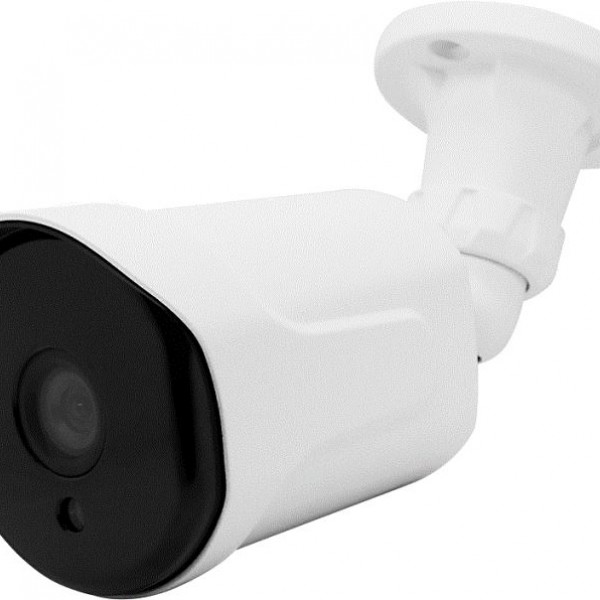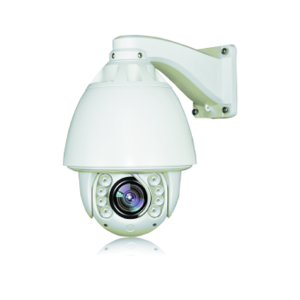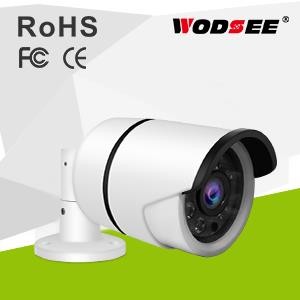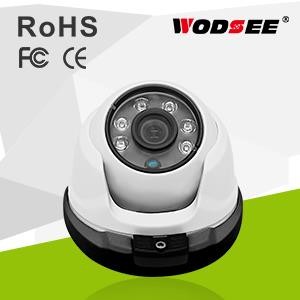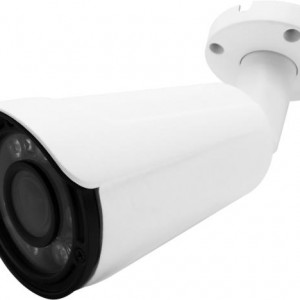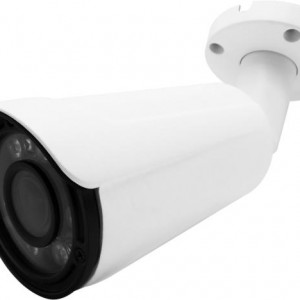WIP400-BD30 Security Camera Monitor Cctv Surveillance P2p Onvif IR 30M
Product Details
WIP400-BD30 security camera monitor cctv surveillance p2p onvif IR 30M
Network camera Features :
Package: 40pcs/carton (carton size: 50.5cm×39cm×35cm)
With Built in POE
Compatible with Hikvision Private Protocol
Smart Low Illumination; Smart ROI(4 ROI region)
Free P2P; ONVIF2.4; BLC; 3D-DNR; DEFOG; DWDR
Support auto IR-CUT filter removal function/ICR
Support: Milestone, NUUO, AXXON, igifort,avigilon
Scenarios:
Apply to roads, warehouses, underground parking and other place which required definition picture quality.
Specification:
| Model | WIP130-BD30 | WIP20A-BD30 | WIP20B-BD30 | WIP20C-BD30 | WIP400-BD30 | WIP20S-BD30 | |
| Image Sensor | Hi3518EV200 | Hi3518EV200 | Hi3518EV200 | Hi3516CV300 | Hi3516D | Hi3516CV300 | |
| Main processor | AR0130C | SC2135 | IMX323 | SONY323 | OV4689 | SONY290 | |
| Resolution | 1.3mp | 2.0mp | 2.0mp | 2.0mp | 4.0mp | 2.0mp | |
| Day/Night | ICR | ||||||
| Min.Illumination | Low LUX: 1.0LUX(Color) 0.1LUX (B&W) | Low LUX: 1.0LUX(Color) /0.1LUX (B&W) | Low LUX: 0.1LUX(Color) /0.01LUX (B&W) | Low LUX: 0.1LUX(Color) /0.01LUX (B&W) | Low LUX: 0.6LUX(Color) /0.08LUX (B&W) | Low LUX: 0.1LUX(Color) /0.01LUX (B&W) | |
| Lens | 3.6MM | 3.6MM | 3.6MM | 3.6MM | 3.6MM | 3.6MM | |
| IR LED | ¢8X6pcs | ¢8X6pcs | ¢8X6pcs | ¢8X6pcs | ¢8X6pcs | ¢8X6pcs | |
| IR Distance | 30M | 30M | 30M | 30M | 30M | 30M | |
| White Balance | Manual/Automatic | ||||||
| OSD | YES | ||||||
| Electronic Shutter | 1/2000 ~ 1/1000 | ||||||
| VIDEO | |||||||
| Compression | H.264 | H.265/H.264 | |||||
| Max Image Resolution | 1280*960 | 1920*1080 | 1920*1080 | 1920*1080 | 4.0MP(2560×1440) | 1920*1080 | |
| Frame Rate | 12–25FPS ( Adjustable) | 12–25FPS ( Adjustable) | 9–16FPS ( Adjustable) | 7–30FPS ( Adjustable) | 4MP @20 FPS, 2MP @30FPS, 1~30 FPS adjustable | 7–30FPS ( Adjustable) | |
| Bit Rate | 100Kpbs~6Mpbs(Adjustable) | 200Kpbs~5Mpbs(Adjustable) | 200Kpbs~5Mpbs(Adjustable) | 200Kpbs~8000kpbs(Adjustable) | |||
| AUDIO(Optiona) | |||||||
| NETWORK | |||||||
| Protocol | TCP/IP, HTTP, DHCP, DNS, DDNS, UDP,RTSP, PPPoE, SMTP, NTP, UPnP, FTP,etc | ||||||
| Compliance | ONVIF 2.4 | ||||||
| PC Client & Browser | UC2, IE,seetong | ||||||
| Mobile Phone | iPhone,iPad,Android Mobile | ||||||
| INTERFACE | |||||||
| Video Output | RJ45 | ||||||
| LAN | 1 RJ45 10/100 ethernet port | ||||||
| GENERAL | |||||||
| Working Temperature | -10 C ~ + 50 C | ||||||
| Working Humidity | 0% ~ 90% | ||||||
| Power Supply | DC12V ,1A | ||||||
| Dimension | 180(L)×66(W)×71(D)mm | ||||||
| Weight | 0.7kg/pcs | ||||||
FAQ:
1.What are the types of storage provided by the network video surveillance system?
The front-end storage is to store the video recording in the hard disk of the DVR. The center store stores the video recording on the central platform’s video server. The video storage is stored in the DVR’s own hard disk. The supported hard disk display or the disk storage supported by the network storage; the client store stores the video recording in the client’s browser to monitor the disk in the machine.
2.Can different manufacturers video server connect to different manufacturers network video surveillance system platform?
At present, the manufacturers of video server equipment can only access to the interface has been docked through debugging, because the terminal interface has not completely industry standards, so temporarily can not fully realize the terminal manufacturers and any platform docking.
3.How to install video server and PTZ, alarm equipment?
The role of the head is to make a fixed fixed camera rotation; and alarm equipment generally play a security role in the event of an exception to the electronic switch generated short circuit and open signal, the signal is captured, the video server can generate a local alarm The output signal can be a variety of target control; such as off-site linkage alarm, alarm signal remote transmission to the monitoring staff, causing the staff of the incident warning and can be based on the actual situation to make the corresponding alarm processing
4.What is Backlight Compensation (BLC) ?
Backlight compensation is a feature that camera companies have been utilizing for some time now. When someone is say sitting in front of a window, or coming in from outside, there is a lot of natural light behind this person. When a camera is aimed in their direction, the camera is picking up all this natural light behind them, therefore the object or person in the foreground becomes very dark, almost silhouette like. Such video is not good for security personnel trying to determine who this person is.
BLC is a feature provided by the Digital Signal Processor (DSP) in a security camera that optimizes exposure in the foreground and background of security video. It splits the video scene into different regions, and uses a different exposure for each of these regions. It corrects regions with extremely high or low levels of light to maintain a normal and usable level of light for the object in focus. However, it is important to note that BLC has its limits when correcting exposure in situations where there is an extreme difference in light between the foreground and background. For best results, WDR has become the sought after feature.
1).Image Sensors
Image sensors are very important pieces of technology located within your security cameras. The image sensor is the component that captures the light hitting your camera’s lens, turning it into electrical signals which get recorded as video. The two types of sensors used with security cameras are CCD and CMOS sensors. Both have their advantages and disadvantages. Below is a brief summary of each type, and you can find our more about CCD and CMOS image sensors.
2).CCD Sensors
CCD Sensors are prevalent in analog cameras specifically as a very high quality sensor. These sensors are what make a Real WDR camera possible along with a DSP like Effio-V. Megapixel CCD sensors are very expensive and because of their cost, most high definition and IP cameras in the consumer market have CMOS sensors instead. This is unfortunate as CMOS sensors lack some features that are only available in CCD sensors. CCD sensors have the highest light sensitivity available, but aren’t best for every application. CCD sensors are capable of holding a large signal in any individual pixel and a very low read noise, meaning they have a much larger dynamic range than CMOS sensors. While CMOS may be better for speed related applications, CCD sensors are much better for applications where low noise is needed, specially in low light..
3).CMOS Sensors
As already stated, most HD and IP cameras are now using CMOS sensors. CMOS sensors have some advantages and drawbacks when compared to CCD sensors. The rate they can convert images to digital data is much faster than what CCD sensors can provide, so overall they are much faster. They also require lower voltage and have lower power consumption. Unfortunately they generate a lot of electrical noise, leading to a sometimes grainier image. Many manufacturers are incorporating different technologies into their cameras to aid with this however. Also, Real WDR is not available in CMOS sensors at this time, and this is why DWDR and similar techniques are employed through the DSP.
Company news:
Video surveillance history: Intelligence become the future mainstream gradually
According to Yu Bo Intelligence Industry Market Research Center, the industry video surveillance solutions need to increase. From the industry’s point of view, in the past few years, the government, telecommunications and finance and other areas of video surveillance has been in the forefront of the entire market, while other industries, despite some demand, the pace of deployment is lagging behind. This also means that the video surveillance market has a wide range of development prospects.
The era of analog monitoring systems. In the 60 ‘s, with the black and white camera gradually into the civilian field, the earliest video surveillance system was born, called CCTV Monitoring System (CCTV), using analog transmission, VCR (video Cassette Recorders) as the core.
Video, audio signal acquisition, transmission, storage using analog mode, the picture quality is high, but the limitation is also obvious: This system only covers the small geographical area, it is difficult to form the large-scale video surveillance system, the system installs, the debugging and the operation maintenance cost and the difficulty is high, is difficult with the electronic access control, the perimeter guard and so on other electronic system forms Contemporary, the technology system and Information system technology system is difficult to be compatible, has gradually withdrawn from the market, by digital, networked video surveillance system replaced.
Digital monitoring System. In the mid 90, the second generation video surveillance system represented by DVR (Digital video Recorder) appeared in the video surveillance market. DVR enables users to sample and digitize analog video signals and then store them on a computer’s hard disk, playing on a computer or a large screen. This phase of the camera still belongs to the category of analog cameras, recording the analog signal. In the late 90 ‘s, with the increase of network bandwidth, computer processing ability and storage capacity, as well as the emergence of various video technology, video monitoring step into the digital network era, called the third generation of remote digital video surveillance system. This period, China’s security industry further development, local security enterprises have been established.
Intelligent Monitoring system: Network Camera ERA. With the development of network camera and Internet, intelligent video surveillance system emerges. Intelligent video Surveillance to detect, segment, track, classify and identify the areas and targets of interest in complex scenes, and to detect and label anomalies, IBM, Sony, CMU and other research institutions and companies have done a lot of research in this field. With the rapid development of AI and deep learning in the past 10 years, the accuracy of intelligent video surveillance algorithm has also been a new step. In the 2015 LFW International face recognition competition, the accuracy of machine recognition reached 99.55%, the first time beyond the human eye. The technical bottleneck is gradually broken, which makes the intelligent video surveillance gradually become the mainstream of the future.
In order to conform to this trend, Wodsee stick to research and development Intelligent products for many years. Intelligent NVR:Face Detection; Modern Intelligent Smart Home system: Smart Gateway, Smart Lock, Smart IP camera, Smart IR Remote Controller, Smart Voice Assistant/Smart Envoironment Monitoring Device, Smart Body Motion Sensor, Smart Door/Window Sensor, Smart Curtain, Smart Wall Switch, Smart Wall Socket, Smart Socket, Smart LED Bulb, etc. Wodsee must be your long-term and nice smart Security CCTV supplier.
More info, please contact info@wodsee.com
WODSEE is one of the best WIP400-BD30 IP Surveillance Camera IP Camera App support Starvis H.265/H.264 IP Camera manufacturers and suppliers and we have one of the famous brands. You can buy or wholesale high quality and newest products with CE certification from our factory.
Hot Tags: best brands buy CE certification factory high-quality newest suppliers wholesale wip400-bd30 security camera monitor cctv surveillance p2p onvif ir 30m manufacturers




